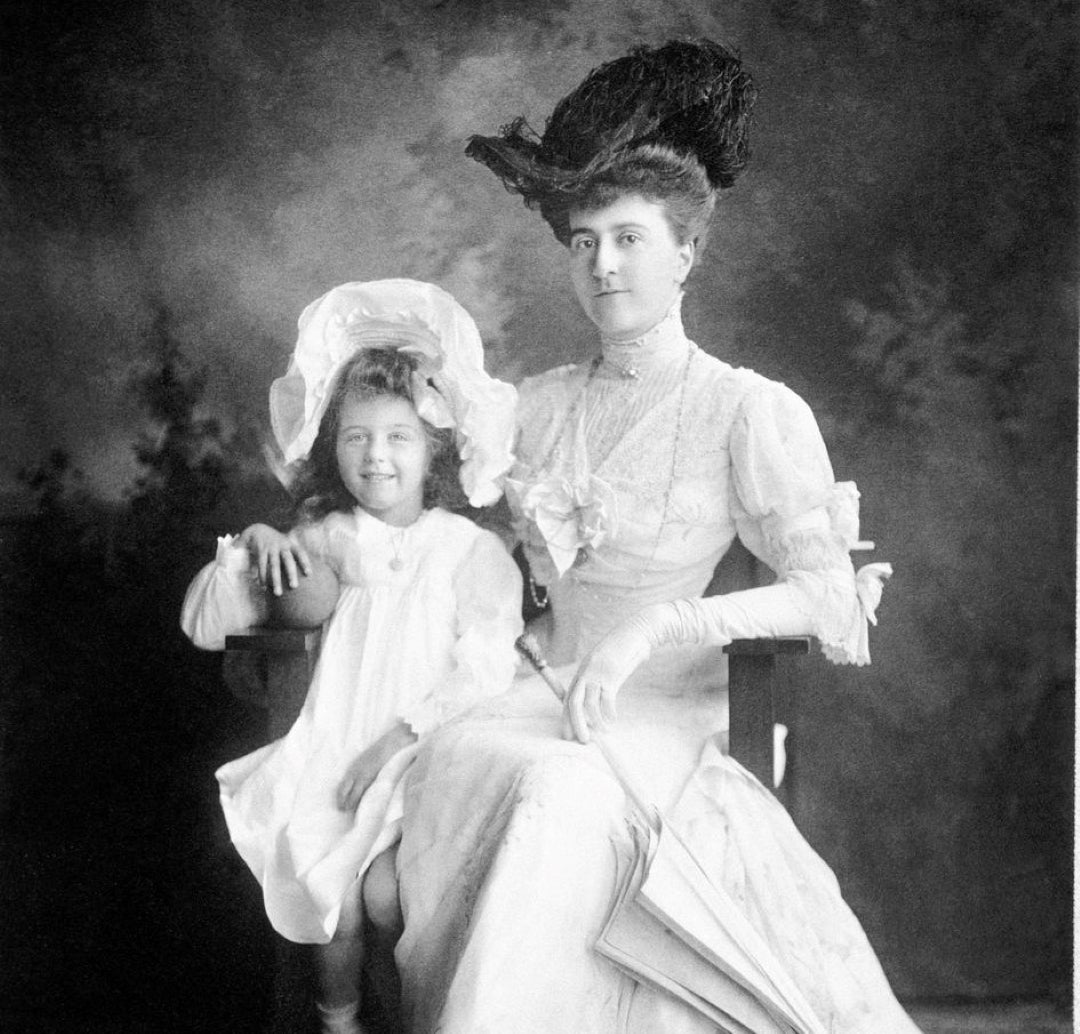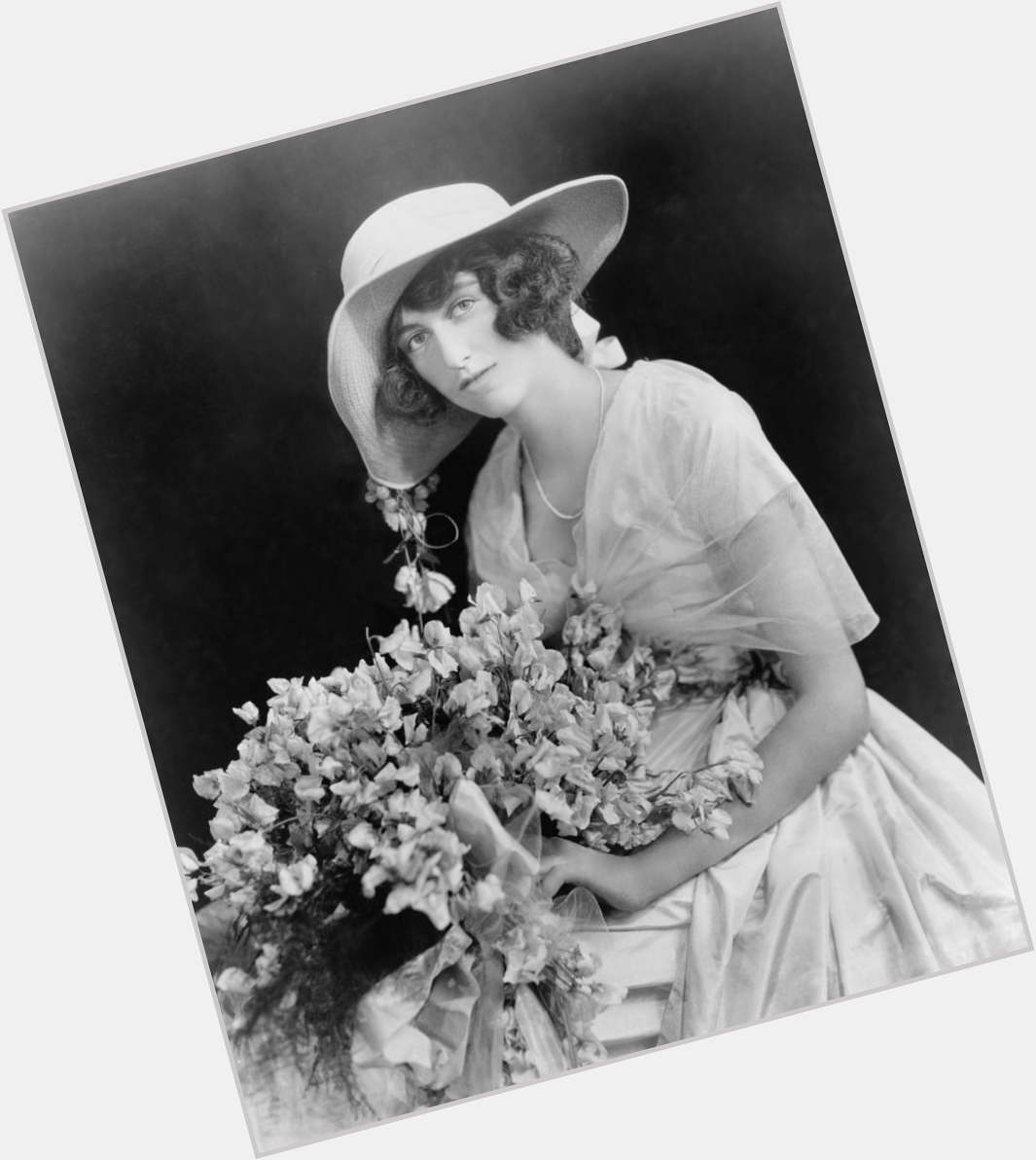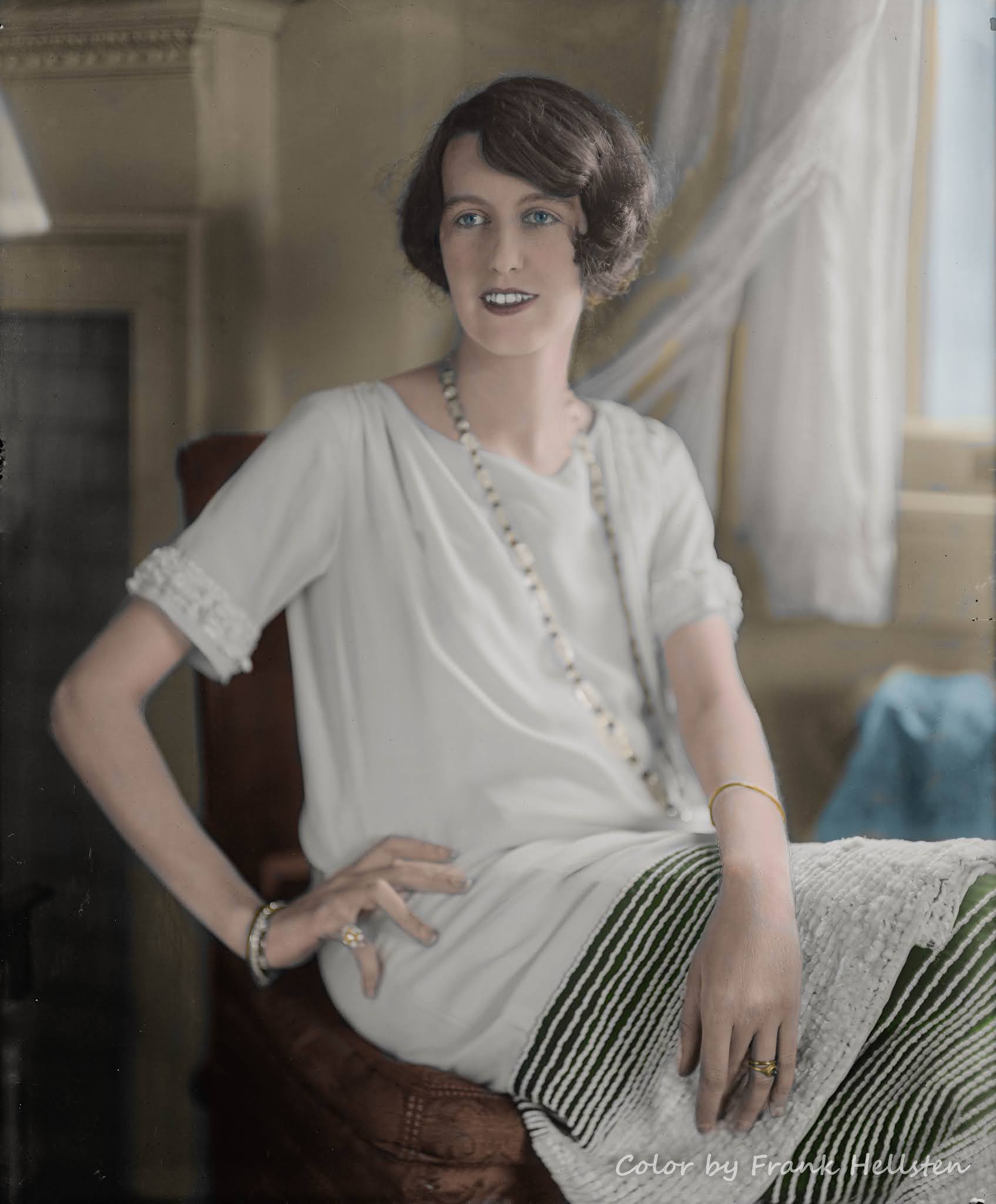Cornelia Stuyvesant Vanderbilt: The Biltmore Heiress Who Forged Her Own Path
Imagine a life where every step is watched, every decision weighed against the expectations of a grand family legacy. That, in a way, was the very world Cornelia Stuyvesant Vanderbilt came into, a world of immense privilege and, as it turned out, rather unique personal choices. She was, you know, the sole daughter of George and Edith Vanderbilt, born into a position that most people could only dream about. Her path, however, would not always follow the straight line one might expect for someone of her standing, particularly as the heiress to her father's rather significant estate.
This story is about Cornelia Stuyvesant Vanderbilt, a woman whose life choices weren't always in alignment with the prominent status she held as the heiress of her father's vast estate. She was, in fact, the only child of George and Edith Vanderbilt, and her journey would take turns that might surprise many who only knew of her family's immense wealth and the famous Biltmore Estate. It's a look at how someone born into such a grand setting could, in some respects, choose a different kind of existence.
Her story, you see, is more than just about inheriting a magnificent home. It speaks to the lessons her parents instilled in her, particularly about giving to others, which she carried with her throughout her life. So, we'll explore her early days, the weight of her inheritance, and the ways she lived a life that, while connected to her famous name, was also very much her own. It’s quite a fascinating tale, honestly.
- Brantley Gilbert Age Net Worth Kids Weight
- Antc3b3nio Guterres Wife Meet Catarina Marques
- Brandon Charnas Bio Age Wiki Facts And
- Paula Harwood Bio Net Worth Height Career
- Thomas Flohr Net Worth How Rich Is
Table of Contents
- Biography: The Life of Cornelia Stuyvesant Vanderbilt
- Personal Details & Bio Data
- Life Beyond Biltmore's Grand Halls
- A Lasting Impact of Giving
- Frequently Asked Questions About Cornelia Stuyvesant Vanderbilt
Biography: The Life of Cornelia Stuyvesant Vanderbilt
Early Life at Biltmore
Cornelia Stuyvesant Vanderbilt, as we know, was the only child born to George and Edith Vanderbilt. Her arrival at the famous Biltmore Estate was, apparently, quite an event. The Spartanburg Journal, in fact, wrote about it, saying, “a new star has appeared at famous Biltmore, and the charming mistress of this most gorgeous home is smiling upon her first born, a tiny girl called Cornelia.” This really gives you a sense of the excitement surrounding her birth, doesn't it?
She was raised, very much, right there at Biltmore, a place that was her home and, in a way, her entire world for a significant part of her younger years. Her education, too, was quite particular for someone of her background. She was tutored privately, which was a common practice for children in families of such means, ensuring she received a very focused and personalized learning experience. Later on, she attended Miss Madeira's School, a place known for its commitment to educating young women, which suggests a broader approach to her learning and development, you know.
Her parents, George and Edith Vanderbilt, clearly played a very important role in shaping her early views. George Washington Vanderbilt, her father, was the fourth of nine children himself, born into a Staten Island family that had rather modest means, which is interesting when you think about his eventual wealth. This background, perhaps, influenced the values he and Edith tried to instill in their daughter. Cornelia, it seems, carried with her the philanthropic lessons her parents taught her, lessons about giving and helping others. These were, in fact, lessons she would continue to practice throughout her entire life, a clear indication of their lasting influence.
- Who Is Yazmina Gonzalez Meet Spencer Rattler
- What Is Mike Johnson S Net Worth
- Where To Find All The Princess Quest
- French Montana Says Max B Might Be
- Dr Cade Hunzeker Cause And Death How
Inheriting a Grand Legacy
The course of Cornelia's life, in some respects, shifted quite dramatically upon the death of her father, George Vanderbilt, which happened in 1914. It was at this point, you see, that Cornelia Vanderbilt became the heiress to the Biltmore Estate. This was a massive responsibility, and a very significant inheritance for someone so young. She inherited the Biltmore Estate from her father, a fact that would, quite naturally, shape much of her future. This inheritance meant that the grand home, a place she had known since birth, was now, in a very real sense, her own to look after.
The estate itself, Biltmore, was a truly remarkable place, known for its sheer size and beauty. It was a property that represented not just a home, but a significant piece of American history and a symbol of the Vanderbilt family's influence. For Cornelia, this inheritance was, therefore, not just about personal wealth, but also about carrying forward a family name and the legacy associated with such a prominent place. It was, arguably, a rather heavy mantle to take on, particularly for a young woman.
Her position as the heiress to Biltmore meant that she was constantly in the public eye, and her decisions were often scrutinized. This prominence, as we've noted, sometimes led to life choices that weren't always in alignment with what might have been expected of someone in her status. It's almost as if she was trying to find her own way, despite the very clear path laid out by her inheritance and family name. This makes her story, I think, quite compelling, honestly, because it shows a person trying to define herself outside of predefined roles.
Life Choices and Philanthropic Spirit
Cornelia Stuyvesant Vanderbilt, the only child of George and Edith Vanderbilt, made life choices that weren’t always in alignment with her prominent status as heiress of her father’s. This is a very interesting aspect of her story, as it suggests a person who, despite being born into immense privilege, sought a different kind of fulfillment or, perhaps, simply followed her own inclinations. She was, after all, raised at Biltmore and tutored privately, then later attended Miss Madeira's School, which might suggest a rather conventional path. Yet, her decisions seemed to deviate from the typical expectations for someone of her background.
Although she never returned to Biltmore, Cornelia Stuyvesant Vanderbilt carried with her the philanthropic lessons instilled by her parents. This is a crucial detail, because it shows that even if her physical presence at the estate ceased, the values she learned there remained a very strong part of who she was. She continued throughout her life to give of her own, which means she wasn't just inheriting wealth but actively using her resources for good. This commitment to philanthropy, you know, speaks volumes about her character and the influence of her upbringing.
Her parents, George and Edith Vanderbilt, clearly emphasized the importance of giving back. Cornelia's continued philanthropic efforts, even away from Biltmore, demonstrate that these lessons truly resonated with her. She inherited the Biltmore estate from her father, yes, but she also inherited a spirit of generosity that she chose to act upon. It’s almost as if her giving was a way to maintain a connection to the values of her family, even if her personal life took her in different directions. This aspect of her life is, frankly, quite admirable, and shows a dedication to helping others that transcended her personal circumstances.
Personal Details & Bio Data
Here is a quick look at some key facts about Cornelia Stuyvesant Vanderbilt:
| Full Name | Cornelia Stuyvesant Vanderbilt |
| Parents | George Washington Vanderbilt and Edith Dresser Vanderbilt (later Mrs. Edith Stuyvesant (Dresser) Vanderbilt, afterwards Gerry) |
| Birthplace | Biltmore Estate, Asheville, North Carolina |
| Status | Only child of George and Edith Vanderbilt |
| Inheritance | Heiress to the Biltmore Estate upon her father's death in 1914 |
| Education | Privately tutored at Biltmore, later attended Miss Madeira's School |
| Marital Status | Married first to a man whose name was Cecil, becoming Mrs. Cornelia Stuyvesant (Vanderbilt) Cecil |
Life Beyond Biltmore's Grand Halls
While Biltmore was her childhood home and the source of her significant inheritance, Cornelia Stuyvesant Vanderbilt's life eventually led her away from its grand halls. It’s interesting to consider that although she inherited the Biltmore estate from her father, she never returned to Biltmore after a certain point. This decision, in a way, marked a significant departure from the expected path of a prominent heiress who would, you know, typically maintain a strong connection to such a family seat. Her life choices, as we’ve noted, weren't always in alignment with the status she held.
Cornelia was married first to a man who became her husband, and she became known as Mrs. Cornelia Stuyvesant (Vanderbilt) Cecil. This change in her name reflects a new chapter in her life, one that moved beyond just being "the Biltmore heiress." It suggests a personal journey that involved building her own family and, perhaps, creating a life that was distinct from the one she had known growing up at the estate. Her identity, therefore, was not solely defined by her birthright but also by the relationships and choices she made as an adult.
The fact that she never returned to Biltmore is, arguably, a very telling detail about her personal trajectory. Despite inheriting such a magnificent property, her life took a different direction. Yet, the lessons she learned there, particularly the philanthropic spirit instilled by her parents, remained a very strong part of her character. She continued throughout her life to give of her own, demonstrating that her connection to her family's values was not dependent on her physical presence at the estate. This shows, in some respects, a deep commitment to the principles she learned, even when her life took her far from the place where those lessons were first taught.
A Lasting Impact of Giving
The story of Cornelia Stuyvesant Vanderbilt is, in many ways, a testament to the idea that one's path isn't always dictated by their beginnings, no matter how grand. She was, after all, the only child of George and Edith Vanderbilt, born into a life of immense privilege at the Biltmore Estate. Yet, her life choices, as we’ve seen, weren’t always in alignment with the prominent status she held as heiress of her father’s. This divergence, you know, makes her story particularly compelling, showing a person who sought to live on her own terms, even within the confines of a famous name.
What truly stands out about Cornelia, however, is the enduring influence of her upbringing, particularly the philanthropic lessons instilled by her parents. Even though she never returned to Biltmore, she carried these values with her. She continued throughout her life to give of her own, demonstrating a consistent dedication to helping others. This commitment to philanthropy is, quite frankly, a powerful aspect of her legacy. It shows that the spirit of generosity, once learned, can transcend geographical distance and personal life changes.
Her life, in a way, serves as a reminder that true wealth isn't just about what you inherit, but what you choose to do with it. Cornelia inherited the Biltmore estate from her father, yes, but she also inherited a sense of purpose regarding giving back. Her story, even today, encourages us to think about how we can contribute to the world, regardless of our circumstances. You can learn more about American history on our site, and perhaps consider how individuals like Cornelia shaped their times by visiting our dedicated page on the Gilded Age.
Frequently Asked Questions About Cornelia Stuyvesant Vanderbilt
Who was Cornelia Stuyvesant Vanderbilt?
Cornelia Stuyvesant Vanderbilt was, in fact, the only child of George and Edith Vanderbilt. She was born at the famous Biltmore Estate in Asheville, North Carolina, and became the heiress to that grand property upon her father's death in 1914. Her life was, quite naturally, shaped by her prominent status, though she made personal choices that weren't always what people expected for someone of her background. She was, in essence, a woman born into immense wealth who also had a strong philanthropic spirit.
What happened to Cornelia Vanderbilt?
Cornelia Vanderbilt, who was married first to a man named Cecil, becoming Mrs. Cornelia Stuyvesant (Vanderbilt) Cecil, eventually moved away from the Biltmore Estate. Interestingly, she never returned to Biltmore after a certain point in her life. Despite this, she carried with her the philanthropic lessons taught by her parents, and she continued to give of her own throughout her life. Her path was, arguably, a bit different from what one might expect for a Vanderbilt heiress.
Did Cornelia Vanderbilt inherit Biltmore?
Yes, Cornelia Vanderbilt did indeed inherit the Biltmore Estate from her father. Upon George Vanderbilt's death in 1914, Cornelia Vanderbilt became the heiress to the Biltmore Estate. This meant that the vast property, which had been her childhood home, passed into her care. It was a very significant inheritance, and it placed her in a prominent position within society, as you can imagine.
For more historical context on the Vanderbilt family and the Biltmore Estate, you might find it helpful to visit the official Biltmore Estate history page.
- Tiffany Lau Bio Age Wiki Facts And
- Tom Sandoval Parents Meet Anthony Sandoval And
- Who Is Santhivila Dinesh Wiki Age Bio
- Ebony Obsidian Parents Where Are They Now
- Butch Patrick Net Worth Celebrity Net Worth

Cornelia Vanderbilt - Biltmore

Cornelia Stuyvesant Vanderbilt | Official Site for Woman Crush

Cornelia Stuyvesant Vanderbilt